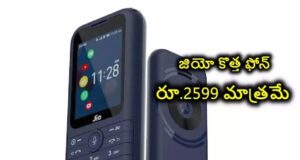 Washington: Small sensors installed in most smartphones and laptops are sensitive enough to detect moderate and large earthquakes – greater than magnitude 5 – a new study suggests.
Washington: Small sensors installed in most smartphones and laptops are sensitive enough to detect moderate and large earthquakes – greater than magnitude 5 – a new study suggests.
A tiny chip used in smartphones to adjust the orientation of the screen could serve to create a real-time urban seismic network, easily increasing the amount of strong motion data collected during a large earthquake, researchers said.
Micro-Electro-Mechanical System (MEMS) accelerometers measure the rate of acceleration of ground motion and vibration of cars, buildings and installations.
In the 1990s MEMS accelerometers revolutionised the automotive airbag industry and are found in many devices used daily, including smartphones, video games and laptops.
Antonino D’Alessandro and Giuseppe D’Anna, seismologists at Istituto Nazionale di Geosifica e Vulcanologia in Italy, tested whether inexpensive MEMS accelerometers could reliably and accurately detect ground motion caused by earthquakes.
They tested the LIS331DLH MEMS accelerometer installed in a smartphone, comparing it to the earthquake sensor EpiSensor ES-T force balance accelerometer.
The tests suggest that the MEMS accelerometers can detect moderate to strong earthquakes – greater than magnitude 5 – when located near the epicentre.
The device produces sufficient noise to prevent it from accurately detecting lesser quakes – a limitation to its use in monitoring strong motion.
D’Alessandro and D’Anna note that the technology is rapidly evolving, and there will soon be MEMS sensors that are sensitive to quakes less than magnitude 5.
The real advantage, say the authors, is the widespread use of mobile phones and laptops that include MEMS technology, making it possible to dramatically increase coverage when strong earthquakes occur.
The current state of the MEMS sensors, suggest the authors, could be used for the creation of an urban seismic network that could transmit in real-time ground motion data to a central location for assessment.
The rich volume of data could help first responders identify areas of greatest potential damage, allowing them to allocate resources more effectively.
The study was published in the Bulletin of the Seismological Society of America (BSSA)
 TeluguNow.com Reviews, Live Updates, Telugu cinema news, Telugu Movies Updates, Latest Movie reviews in Telugu, Telugu cinema reviews, telugu movie reviews, Telugu Actress Photos, Telugu Movie HQ Photos, Tollywood, Box office collections, Telugu Movie show times, Theater List, telugu cinema tickets Telugu Movie Review, Telugu Movie Ratings, Telugu News, News in Telugu, AP Politics, Telangana News, Gossips, Telugu Cinema News, Wallpapers, Actress Photos, Actor Photos, Hot Photos,
TeluguNow.com Reviews, Live Updates, Telugu cinema news, Telugu Movies Updates, Latest Movie reviews in Telugu, Telugu cinema reviews, telugu movie reviews, Telugu Actress Photos, Telugu Movie HQ Photos, Tollywood, Box office collections, Telugu Movie show times, Theater List, telugu cinema tickets Telugu Movie Review, Telugu Movie Ratings, Telugu News, News in Telugu, AP Politics, Telangana News, Gossips, Telugu Cinema News, Wallpapers, Actress Photos, Actor Photos, Hot Photos,



